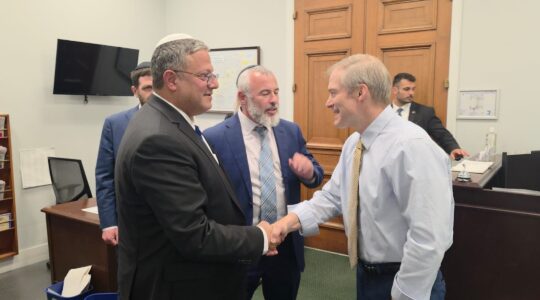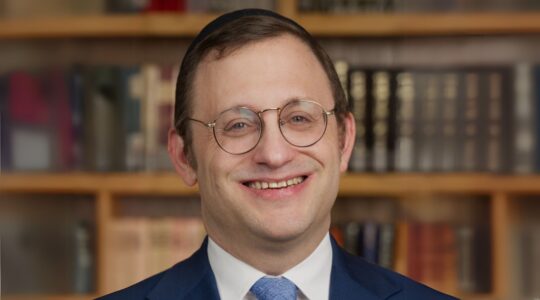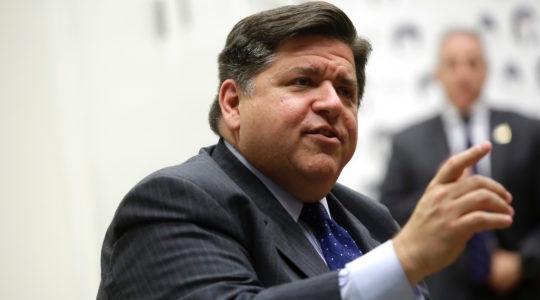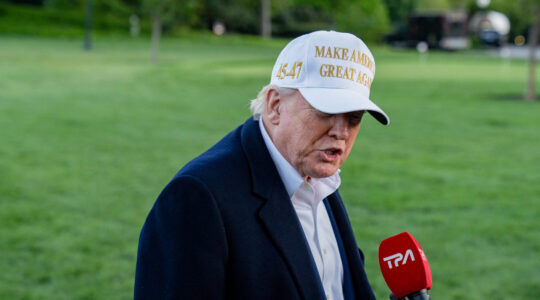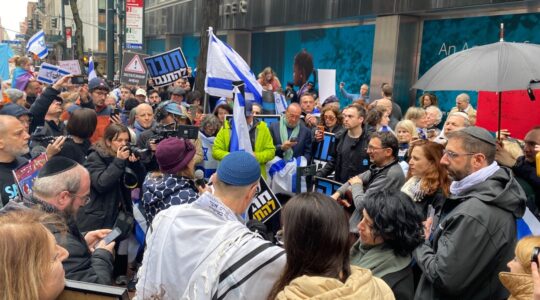NEW YORK (JTA) – Of all the theological and liturgical questions attending the design of the Reform movement’s forthcoming prayer book, none was more contentious than the decision to restore the prayer for the resurrection of the dead.
“That’s the hot one,” said Rabbi Elyse Frishman, editor of the new work, Mishkan T’filah.
The issue was revisited several times. Various study texts were considered and reconsidered. At one point the prayer book’s editorial committee – composed of clergy and theologians as well as movement professional and lay leaders – elected to dispense with the language altogether.
In the end, however, the designers elected to revive the prayer whose elimination was once a hallmark of Reform theology.
“There is no question that this represents a move towards tradition in the Reform movement,” said Rabbi David Ellenson, the president of Hebrew Union College-Jewish Institute of Religion.
Ellenson said he rejects the literal idea of resurrection and believes most Reform Jews do as well.
Due for release in the coming weeks, Mishkan T’filah has been in the works for more than two decades. Perhaps the most democratized prayer book in history, it has been subjected to years of testing in hundreds of Reform congregations and at major rabbinical conferences and other movement events.
The book’s unique two-page layout provides readings and commentary alongside the liturgical text intended to allow for an array of theological approaches.
Movement insiders generally agree the change reflects Reform’s continued turn toward traditionalism and its growing willingness to entertain liturgical tropes and rituals once shunned in the name of modernity.
But befitting a prayer book conceived to appeal to diverse beliefs and practices, members of the editorial committee offered various and sometimes conflicting explanations for the prayer’s return. In particular they differed on whether the change reflects merely a new comfort with liturgical metaphors or a deeper change in Reform theology.
The movement’s Pittsburgh Platform of 1885 explicitly rejected the notion of bodily resurrection, an idea considered unmodern, unscientific and irrational.
“Certainly to the 19th century reformers, the idea that Judaism believed in resurrection of the dead seemed to them the antithesis of the kind of rational Judaism that they thought most Jews wanted and expected,” said Jonathan Sarna, a Jewish history professor at Brandeis University.
In prior Reform prayer books, the traditional blessing of God as the one who revives the dead – in Hebrew, “m’chayeih hameitim” – was changed to “m’chayeih hakol,” literally “who gives life to all.” The new prayer book includes the modified version, but also offers worshipers the ancient formulation as an alternative.
Many if not most of those involved in the production of Mishkan T’filah continue to reject the idea of God literally raising dead bodies from the earth. As metaphor, however, the phrase is thought to be sufficiently meaningful for people that it was worthy of restoration.
“For a number of people in our movement, reclaiming traditional language feels very meaningful,” Frishman said. “And when that language resonates positively, people want it.”
Editorial committee members provided various metaphoric interpretations for the prayer, from the reawakening that occurs after surgery to the notion that the Jewish people were resurrected after the Holocaust in the rebirth of the State of Israel.
Others, however, are less willing to dismiss the idea of resurrection as pure metaphoric fancy, arguing that if there is an afterlife – a notion that Reform has never renounced – it will have to be a bodily one, since human beings do not know themselves in any other way.
“The subject of life after death is very difficult for moderns for many reasons,” said Eugene Borowitz, a Hebrew Union College professor and one of the world’s leading Jewish philosophers. “But once one understands that, there are good reasons for hoping that there is life after death. And that since we know ourselves as embodied persons, the traditional terminology makes sense, although it has to be taken quite poetically.”
Borowitz ascribes the theological shift to the impact of feminist thought, which has forced a reconsideration of the strict separation between body and soul.
“Gender is substantially a bodily matter,” he said. “So if body is that critical to our proper sense of self, then to hope that God will grant us life is – with all the difficulties involved in the phrase – a way of saying that in some sense life after death is also embodied.”
One who has long urged the prayer’s reinstatement is Neil Gillman, a Conservative rabbi and author of a book on death and resurrection in Jewish thought. Gillman’s book, “The Death of Death,” was acknowledged as an influence on the thinking of the prayer book’s editorial committee members.
“When the rabbis envisioned how God would like us to be for eternity, God would like us to be as we are now in historical time and in society – as embodied beings,” Gillman said. “The way we are now is so important and so treasured by God that that’s how he wants us to be for eternity.”
Perhaps the most intriguing explanation for the shift was offered by a rabbi at the opposite end of the spectrum.
Dovid Eliezrie, a Chabad rabbi in California, says his movement is responsible for reviving the idea of the coming of the Messiah, the prerequisite event for the resurrection.
“I think that the Lubavitcher rebbe took the concept of Moshiach out of the theological closet to the Jewish mainstream,” Eliezrie said, “and this has affected the mind-set of all segments of the Jewish community.”
Rabbi Peter Knobel, the chair of the editorial committee, demurred.
“I think Chabad has had no impact on this,” Knobel said. He went on to criticize the belief in some Chabad circles that the movement’s late religious leader, Menachem Schneerson, was the Messiah.
“It has created tremendous tension in the community,” Knobel said, “and I think for sure the progressive community looks at it with great difficulty.”
JTA has documented Jewish history in real-time for over a century. Keep our journalism strong by joining us in supporting independent, award-winning reporting.
